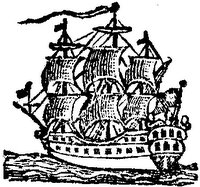The Move onto Ploughed Hill and “Poor Billy Simpson”
Capt. James Chambers (1743-1805) of Pennsylvania wrote to his wife on 29 August:
I was ordered to draw fifty men out of each of the Cumberland companies, and to be ready to march at Sunset. Accordingly I did so, and marched without beat of drum to Prospect Hill, and thence proceeded with the riflemen stationed there, in all about four hundred, to Ploughed Hill, and then down the hill within three or four hundred yards of the enemy’s strongest works, to cover a party of about two thousand musket men who were at the same time to entrench on Ploughed Hill.Pvt. Simpson was born about 1743, family historians guess. His older brother Michael was a lieutenant in the Paxtang company.
They labored hard all night, and at daybreak had the redoubt nearly completed. The English began a heavy cannonading, which continued all day. They killed one adjutant and one soldier with cannon, wounded three others with musket balls. William Simpson, of Paxton [Paxtang], was struck by a shot and his foot carried away, &c.
Maj. Robert Magaw (1738-1790) provided a more detailed account of the action:
On Saturday Night Last about 2000 of our Army with 100 of our Battalion took possession of Plough Hill—this hill lies a little to the left of a direct line from our Camp to Bunker’s Hill near Mistick river, about 3/4 of a mile from us, & very little more from Bunker’s Hill. The Possession of it has for a considerable time been deemed an object of much importance both the by the enemy and by us.However, by the time Magaw finished that 29 August letter he had to add: “Poor Simpson whom I heard this Morning was in a good way is Since Dead.”
They discovered our Work only on Sunday Morning, & soon began a very heavy Cannonade from Bunkers Hill & Two Floating Batteries which continued the whole day, & altho’ their Artillery was conducted by some of the best Engineers in the British Service & shot amazingly true, all the loss sustained was two killed in the fort and two wounded nearer to the Enemy where 50 of our Rifle Men were placed all day among Orchards, Cornfields etc., sustaining and returning a heavy Fire with the Enemy’s Musketry, the Cannon Balls Shot at Ploughed Hill constantly hissing over their Heads.
Poor Billy Simpson was the only person who suffered of ours. He had his Foot and Ankle shot off by a Cannon Ball as he lay behind a large Apple Tree, watching an Opportunity to Fire at the Enemy’s Advanced Guards. There appears no Danger of his recovery.
Lt. Col. Edward Hand (1744-1802, shown above) was a doctor and veteran of the British army. On 29 August he reported that “Poor Simpson (beau) had one of his legs shattered by a cannon ball, The director general took it off, but the poor lad was buried this evening.”
In his memoirs, James Wilkinson wrote, “The young man was visited and consoled during his illness by Gen. [George] Washington in person, and by most of the officers of rank belonging to the army.” However, Wilkinson didn’t arrive in Massachusetts until “two or three weeks” after Simpson was wounded on 27 August, and he’s far from the most reliable figure in U.S. history.
Whether or not Wilkinson’s statement is true, Pvt. William Simpson’s death was significant. He was the first soldier who had come to the siege of Boston from outside New England to die in the Continental cause.

_(detail).jpg/220px-Edward_Hand_(NYPL_b12349196-420212)_(detail).jpg)





